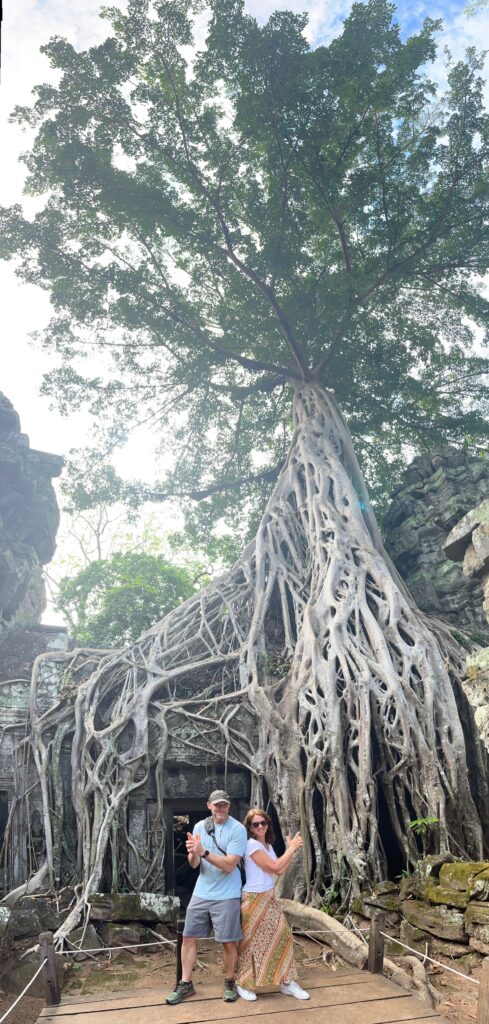We knew visiting Angkor Wat would be a highlight of our Southeast Asia journey—but nothing quite prepares you for the scale, mystery and overall wow factor. Before planning this trip, I had definitely heard of Angkor Wat—but honestly, I couldn’t have told you exactly what it was or where it was. It was one of those faraway places that sounded impressive but felt abstract—until we stood in front of it at sunrise and it became unforgettable Our day started early. And we mean 4:30 AM early. We joined a small group tour—just six of us plus our guide—and were picked up in the dark by a tuk-tuk, groggy but excited. By the time we arrived at the entrance to Angkor Wat, it was still pitch black, flashlights bobbing as we walked through the massive outer causeway. The goal? To catch sunrise over the reflecting pond, one of the most iconic scenes in all of Cambodia.
As the sky slowly shifted and the sun started to rise over Angkor Wat—its five lotus-shaped towers rising majestically—came into view (we had a good sunrise, but we’ve heard the colors are sometimes amazing). It was a quiet, almost sacred moment, shared by hundreds of other early risers. But the sunrise was just the beginning.
A Brief History of Angkor Wat
Angkor Wat isn’t just Cambodia’s most famous landmark—it’s a 9th Wonder of the World and the largest religious monument on Earth (over 4 times the size of Vatacin City). Originally built in the early 12th century (around 1113–1150 AD) by King Suryavarman II, it was intended as a Hindu temple. Over the centuries, it gradually transformed into a Buddhist temple, which it remains today.
Constructed over a span of about 30 years, Angkor Wat is part of the larger Angkor Archaeological Park, which once supported a massive civilization with a population of over a million people—one of the largest pre-industrial cities in the world. The sheer scale is hard to wrap your head around until you’re walking it. From intricate carvings that stretch for hundreds of meters to steep, crumbling staircases once meant only for royalty or priests, the entire complex feels like it was built to inspire awe…and it did!
Despite its age, Angkor Wat continues to stand strong thanks to ongoing international and local conservation efforts. After being named a UNESCO World Heritage Site in 1992, major restoration projects began—many countries are working in partnership with the Cambodian government. These efforts focus on stabilizing crumbling structures, preserving carvings, and managing tourism impact.


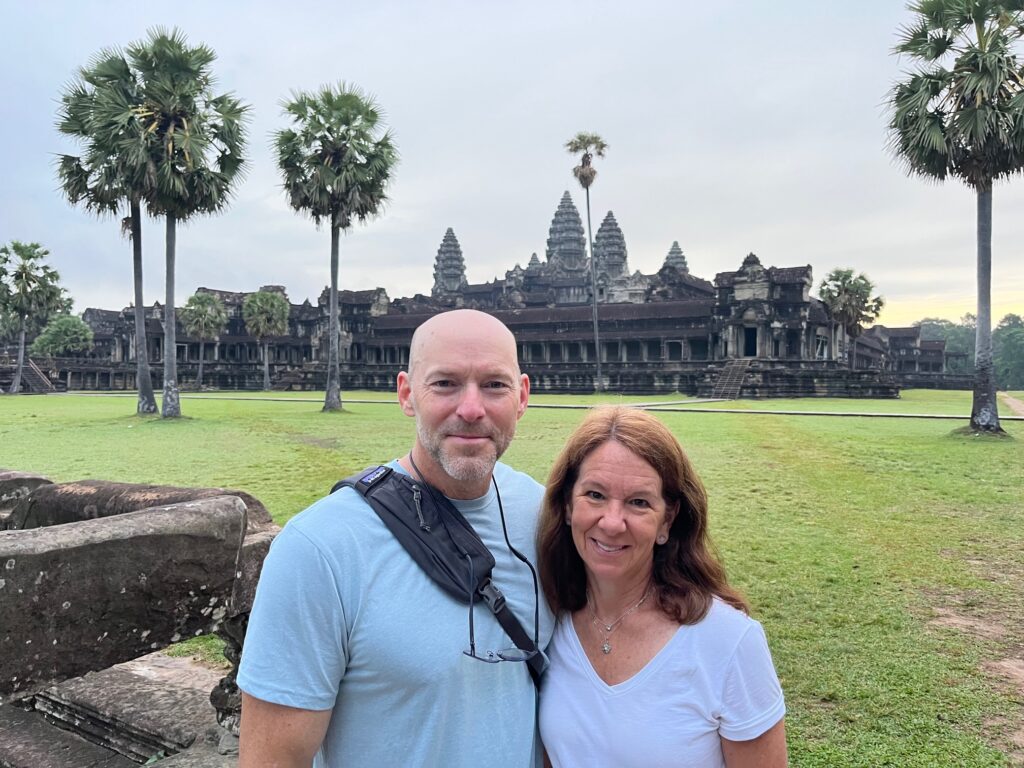
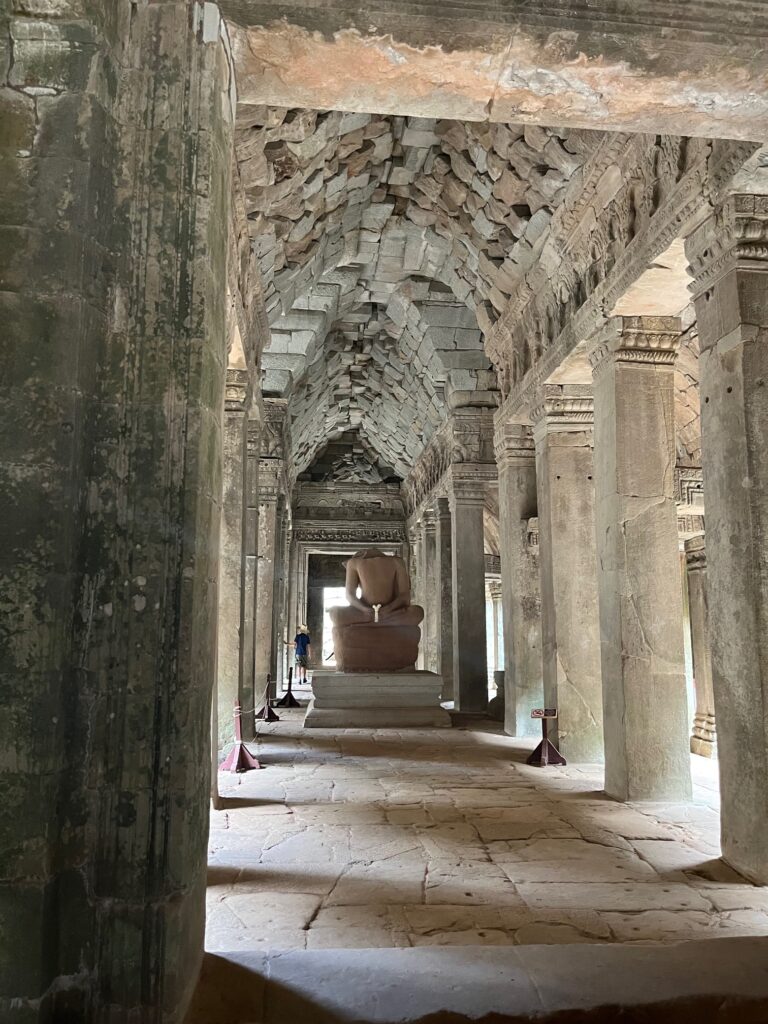
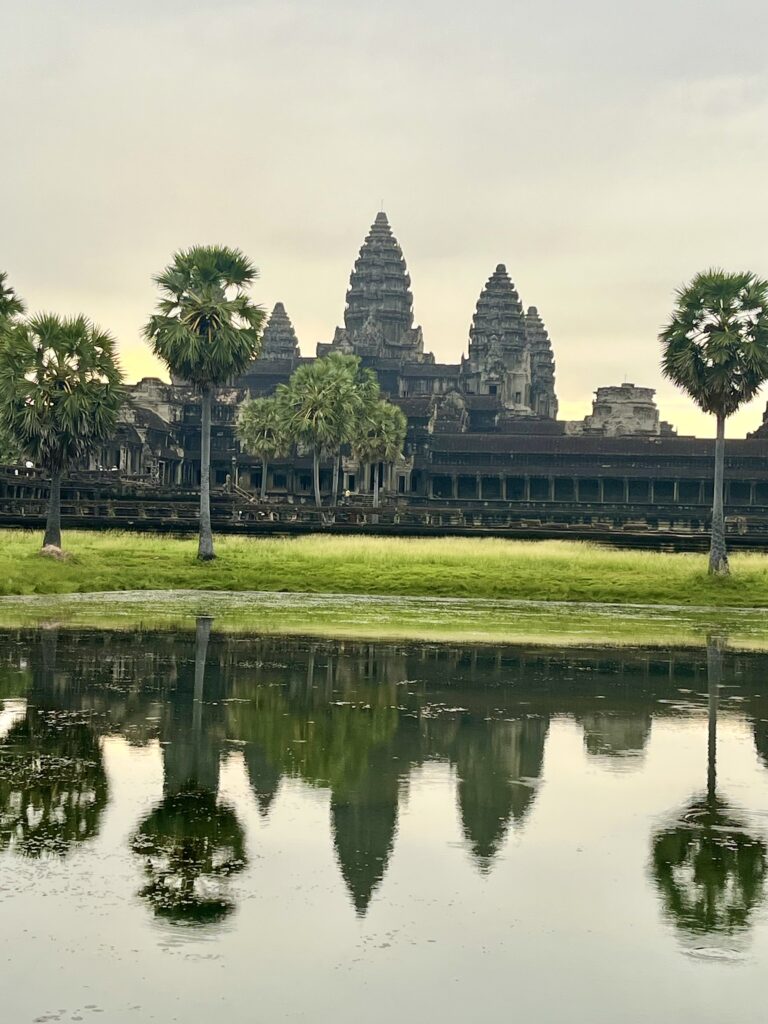
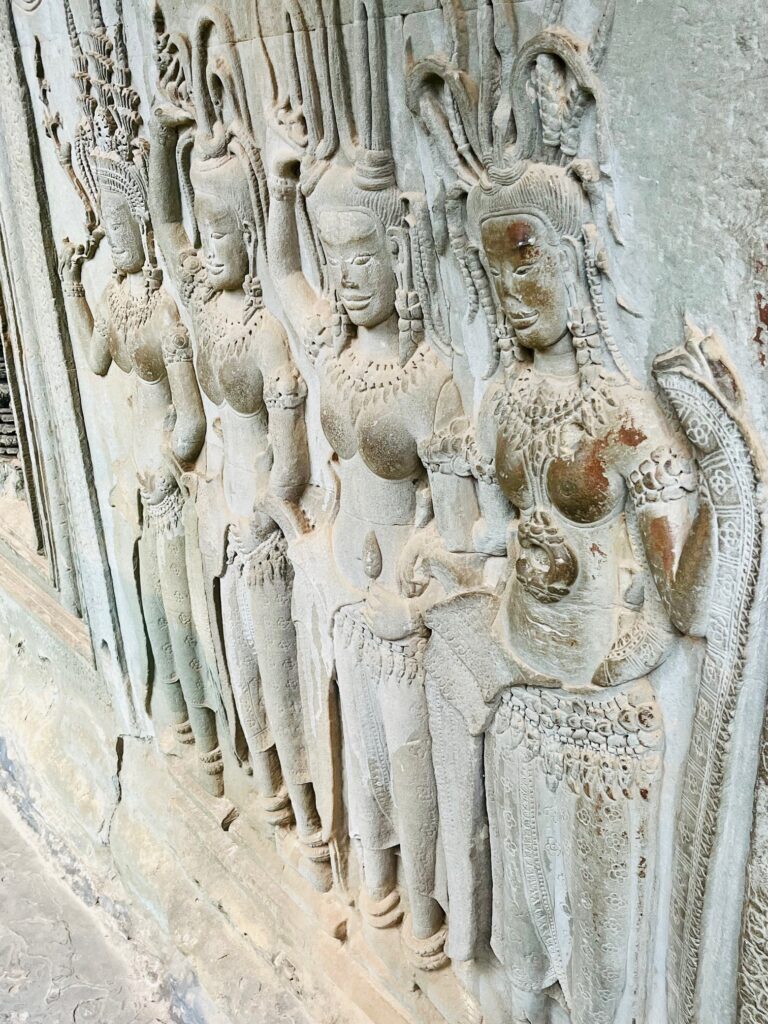
A Living History: Stories from Our Guide
One of the most memorable parts of our visit wasn’t just the temples themselves—it was hearing personal stories from our guide, whose family has lived in the Siem Reap region for generations. He shared how Angkor Wat isn’t just a historical site, but a place that has offered shelter and spiritual refuge, even in modern times.
During the years of war and conflict in Cambodia, especially in the 1970s, around 2,000 local citizens took shelter within the grounds of Angkor Wat. Our guide explained that his grandparents were among those who believed the temple complex was a sacred, protected place—unlikely to be bombed due to its cultural and religious significance. For a couple of years, families lived quietly among the ruins, surviving off the land and one another’s help. Hearing these stories gave the ancient stones a deeper resonance. Angkor Wat isn’t just a relic of the past—it’s part of living memory, a symbol of strength and survival for the people who have called this region home for centuries.
Ta Prohm: Where Nature and Stone Collide
While Angkor Wat is undeniably the star of the show, Ta Prohm quickly became one of our favorite temples—and for good reason. Though it’s not nearly as large or architecturally grand, Ta Prohm feels like something out of a dream, or more accurately, a movie. Famously featured in the 2001 film Tomb Raider starring Angelina Jolie, Ta Prohm is often referred to as the “Tomb Raider temple.” But its magic goes far beyond Hollywood. What makes this temple so unforgettable is the way giant tree roots—mainly from the silk-cotton and strangler fig trees—spill over ancient stone walls, wrap around doorways, and burst through roofs. It’s as if nature and man-made architecture are locked in a slow, beautiful battle.
Built around 1186 AD, Ta Prohm was originally a Buddhist monastery and university. At its height, it housed over 12,000 people, including high priests and monks. Unlike many other temples in the Angkor complex, Ta Prohm was deliberately left in a semi-ruined state during restoration. This was to preserve its unique character and emphasize the power of the jungle reclaiming its space—something you feel deeply as you walk through its shadowy corridors and open courtyards. There’s something very cool about standing beneath those roots, surrounded by crumbling walls. Ta Prohm might not have the grandeur of Angkor Wat, but it has a soul—and it easily ranks as a close second favorite for us.
